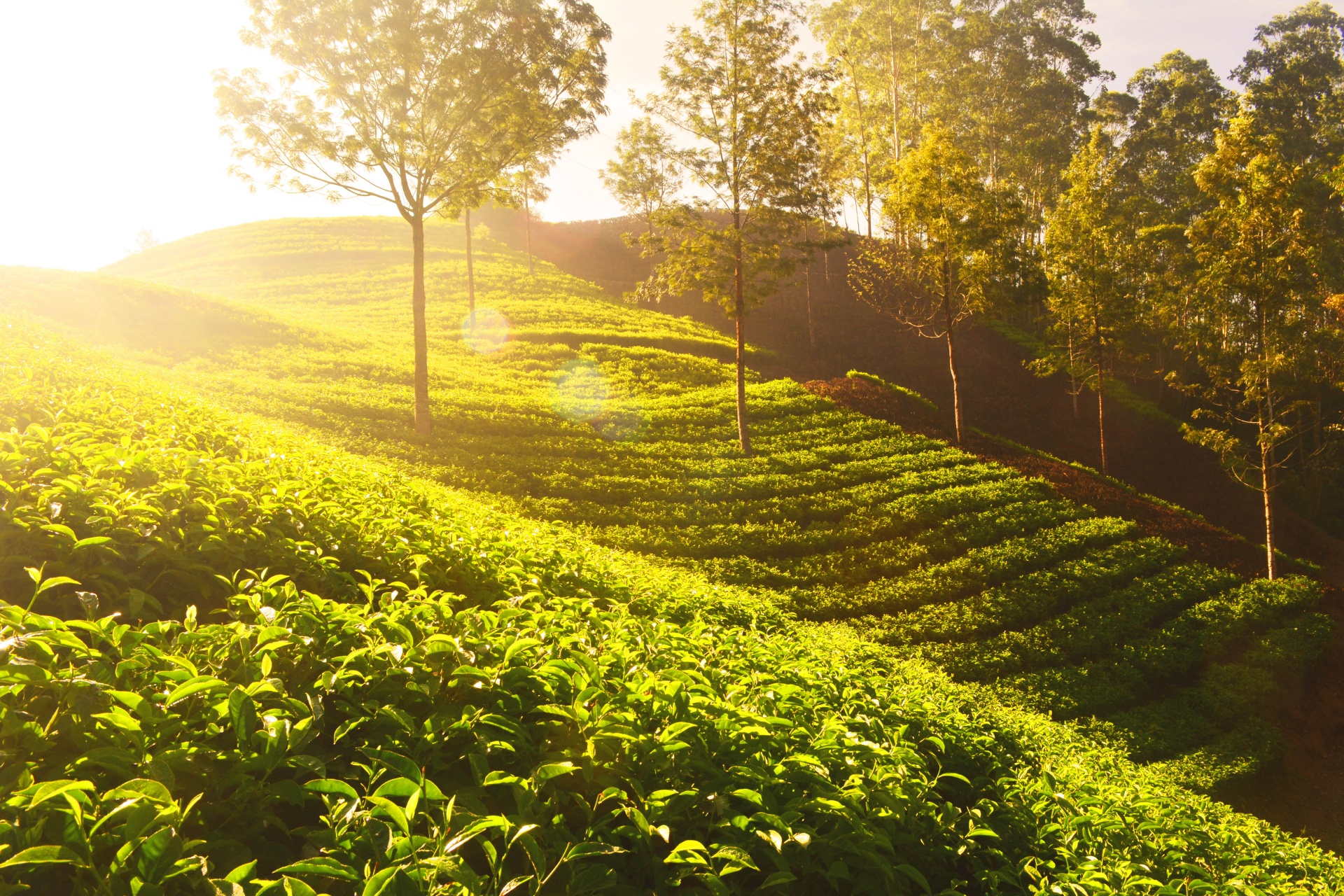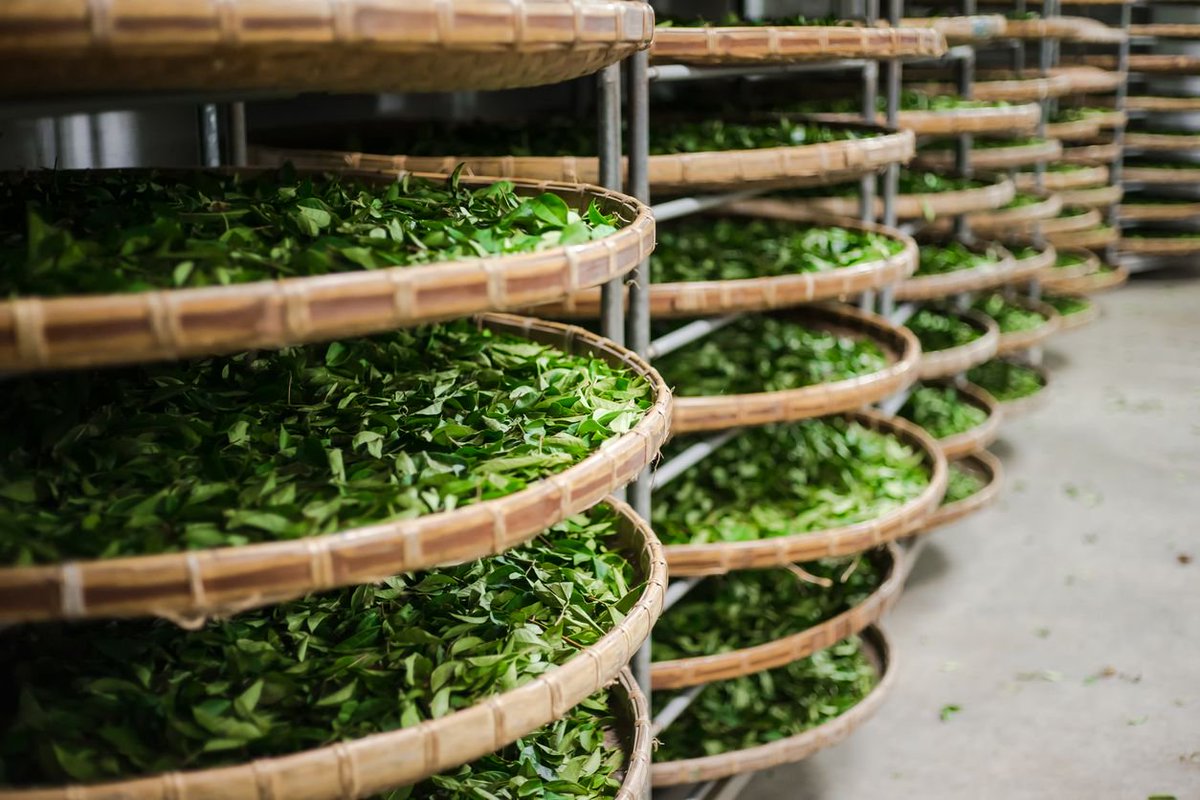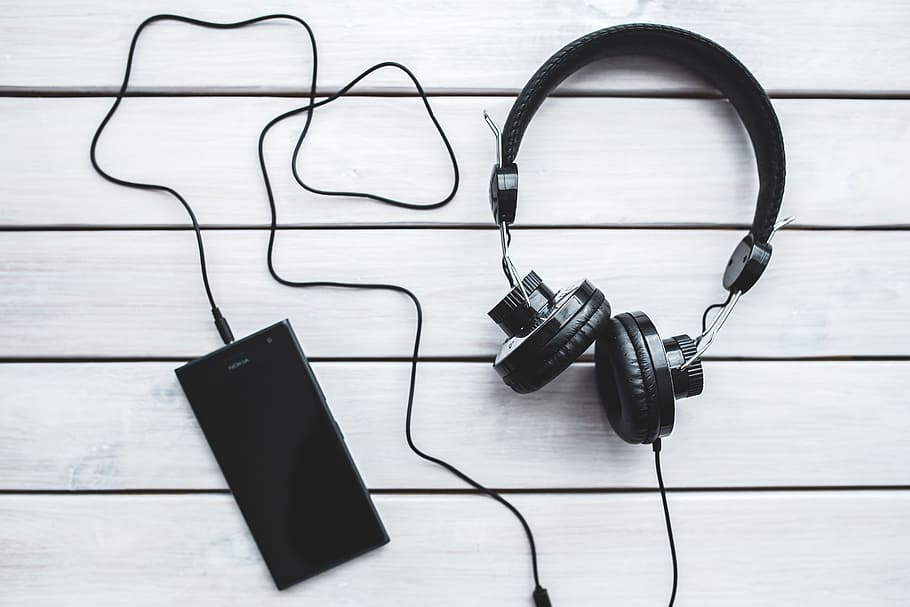Rating of the best varieties of yellow tea for 2020
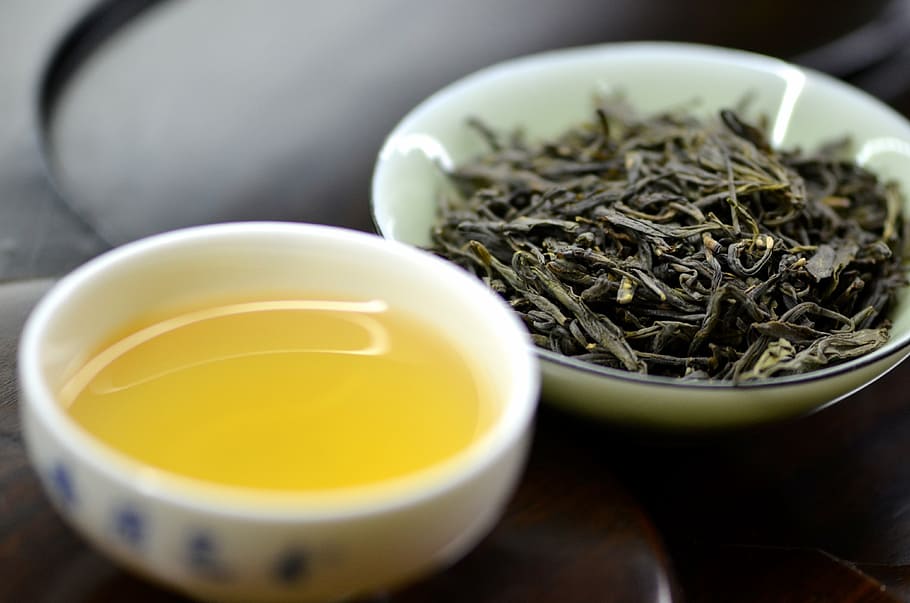
Unique yellow tea is the property of China, not to be confused with the common Indian analogue, which is made from fenugreek seeds. The buds and leaves for elite yellow tea are collected on the slopes of Jun Shan Mountain, near Lake Tinh in one of the provinces of the Middle Kingdom. Ready tea is sold out by a certain circle of people so quickly that it simply does not reach the residents of large cities in China.
For a long time, it was forbidden to export the drink of the nobility and emperors from the Celestial Empire. The recipe was kept in the strictest confidence. It was because of the violation of the export law that the son-in-law of the emperor was executed in the 16th century.
Procurement
The processing technology for yellow and green tea is similar, it goes through the following stages:
- collection of fresh leaves;
- fixation (stop oxidation)
- curling the sheet;
- languor (giving a characteristic color);
- drying.
Collection
It all starts with the collection of yellow tea buds or young leaves, as evidenced by the still preserved particles of the cannon on the tea leaves. Only the freshest buds get to the harvesting.
It is forbidden to collect low-quality tea, it is considered a marriage:
- too long kidneys;
- too small sheets;
- opened kidneys;
- purple buds;
- eaten by insects;
- diseased kidneys;
- sluggish kidneys.
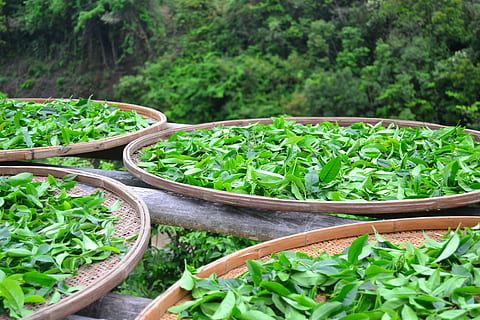
There are also 6 rules that collectors and procurers strictly adhere to:
- all harvesting takes place at the beginning of spring;
- tea is not harvested on rainy days;
- the batch of tea is prepared within three days;
- work is done by masters manually;
- the day before the assembly of raw materials, employees are prohibited from using perfumed cosmetics, perfumes, smoking, drinking alcohol;
- before assembly, workers bathe and put on clean clothes.
After drying, the raw materials are covered with a damp cloth, during this stage the tea acquires a beautiful mustard yellow color.
Fermentation and drying
All tea known to the world grows on the only plant species of the Camellia genus. In scientific literature, it is called Chinese camellia (Camellia sinensis). And they differ only in color: green, white, black, red and yellow, the result of processing depends on the degree of fermentation.
Like a cut apple, which at the cut site changes color by oxidation, a broken tea leaf or bud curls, kneads, releases juice during production. And when in contact with oxygen, the process of fermentation, oxidation occurs. This stage is called fermentation.
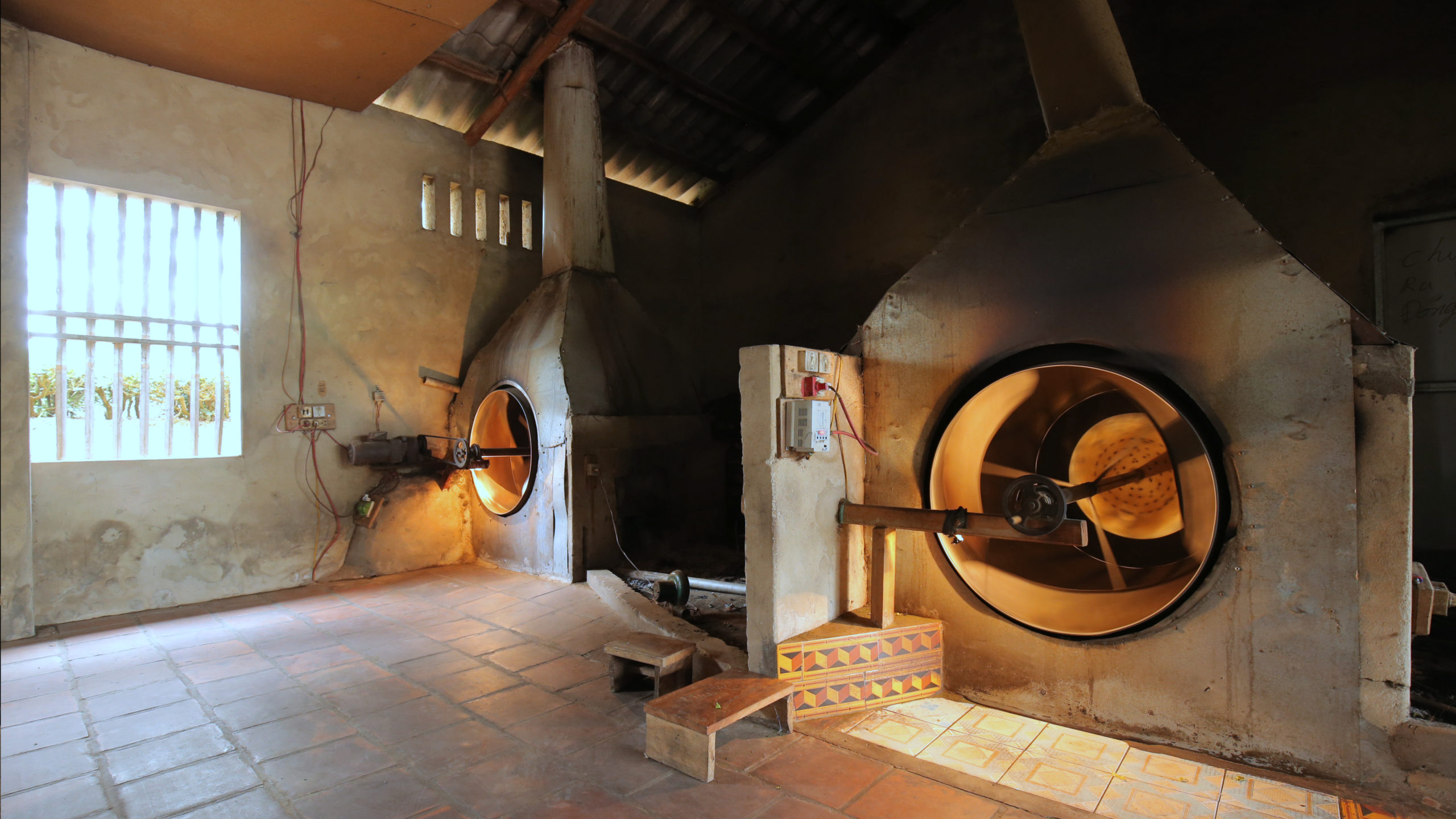
The fermentation time determines the color of the future drink. So it can be 40 minutes or several hours.
The formation of thearubigins and theaflovins is the result of oxidation of a mixture of enzymes and tea polyphenols.During fermentation, the room is filled with wonderful floral, berry and nutty aromas.
The characteristic color and smell indicates the end of the process to the master, here the professional must react quickly and stop fermentation in time by drying and frying the tea blank at high temperatures. Without drying, the tea will rot and mold.
Yellow tea has a low degree of fermentation: minimum 3 percent, maximum 12%.
How to brew and store yellow tea
Mistakes when brewing yellow tea, as well as improper storage of it, will affect the quality of the resulting drink, the taste will become bitter, and the delicate aroma will replace the pungent musty smell.
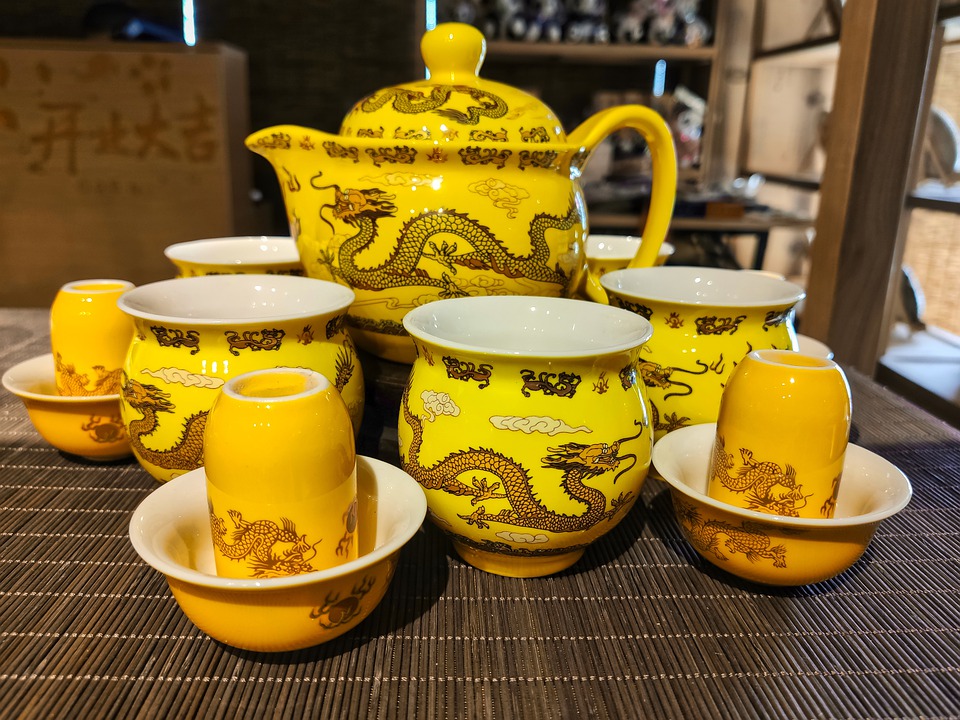
Brewing
Tea drinking in China from time immemorial was considered the highest ceremony. For the correct steaming of yellow tea, special dishes are used and the temperature of the water is maintained. By brewing the same portion of tea again, you can catch notes of a sweetish aftertaste.
Dishes and proportions:
- the ideal solution is a 100-150 ml glass teapot, such a brewing will show an amazing waltz of tea leaves; also use: porcelain and ceramic vessels. Plastic and metal dishes are excluded;
- water temperature 75 - 80 degrees. Boiling water at 90 - 100 degrees kills the spicy delicate aroma and taste of the drink, bitterness appears;
- 2 - 3 g of yellow tea;
- thick cotton or linen fabric.
Previously, all the dishes for the ceremony are heated with water of 50-60 degrees. Pour the leaves into the teapot and cover with a cloth. Brewing time 7 - 10 minutes. Sometimes fruits and berries are added to tea, brewed with milk instead of water. Sugar interrupts the taste of an elite drink.
When brewing in a glass teapot, the leaves line up vertically, with the tip down, cuttings up. After 3 minutes, they begin to descend and then rise. Tea leaves perform this "dance" up to 3 times, called "3 rises and 3 descents".
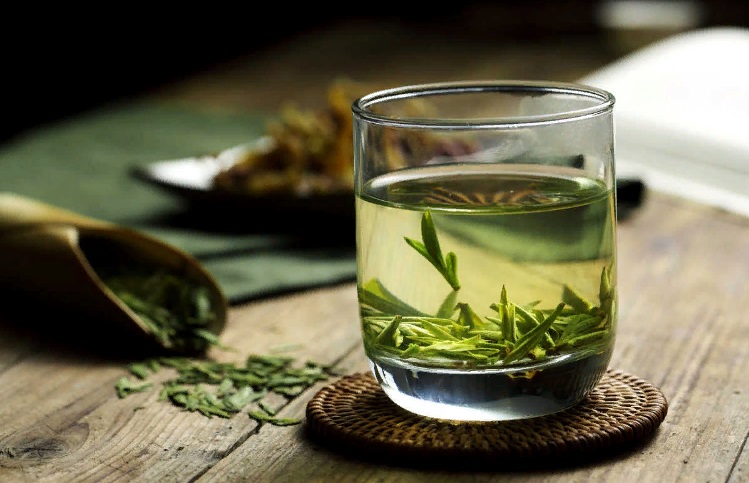
Storage
Yellow tea is sensitive to moisture and should only be stored in a cool place. There are a few more recommendations on how to store tea:
- dry leaf absorbs odors very quickly, so it is stored separately from "odorous" products, including separately from coffee;
- the tightness of the packaging is the key to preventing oxygen from entering the tea, otherwise, the drink loses its freshness, rich aroma and even taste;
- direct sunlight or constant electric light also adversely affects all of these qualities;
- cool place up to 12 degrees and sealed packaging will keep the tea fresh for a long time.
The shelf life of raw materials is 10 - 12 months.
Characteristics of tea
Yellow tea can be distinguished from other teas by its characteristic “smoked” aroma. A subtle yet tart taste revealing a nutty aftertaste and a sweetish middle note are characteristic of the entire range of the yellow drink.
The brewed drink has a hint of ripe apricot or young mustard. A pinkish halo forms on the inside of the cup.
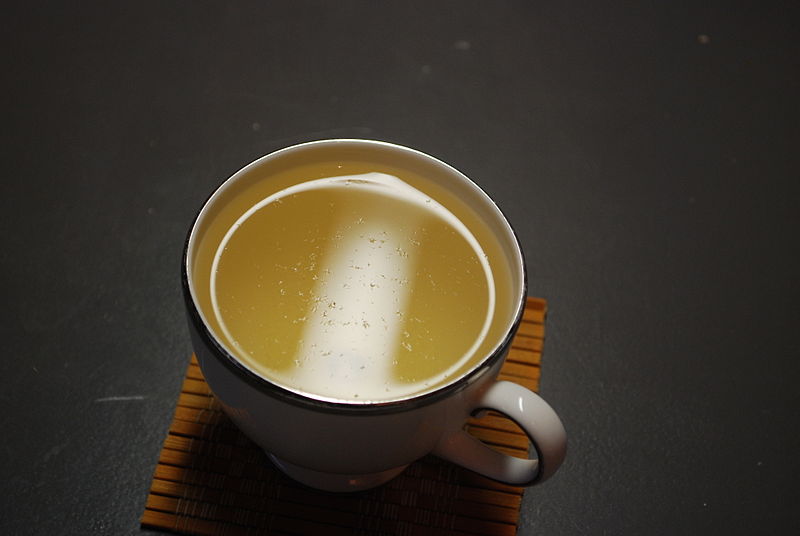
Tea leaves of the same batch, all of the same size and covered with a fleecy coat. The kidney species has the same characteristics.
Yellow tea is made from high quality raw materials and sold loose. The yellow tea bags are most likely a fake product.
Composition of tea and its effect on the body
In terms of its beneficial properties, the effect on the human body, yellow tea has no equal. Until the 20th century, yellow tea in China was used exclusively for medical purposes. It has a positive effect:
- the immune system;
- restores salt balance;
- surprisingly, along with sedative properties, it relieves fatigue;
- brings the body to a healthy tone, clears the mind;
- is able to cool the body, therefore it is considered a summer drink, thanks to the same ability it is used to lower body temperature in patients.
Tea is able to relieve or relieve mild headache, muscle pain, and improves brain activity. Removes toxins, purifies the blood.
The chemical composition of tea
The amino acid content in yellow tea is 2 times higher than in its green counterpart.Chemical composition:
- essential oils;
- alkaloids;
- tannins;
- vitamins (P, PP, B, B1, B2, C);
- minerals (phosphorus, calcium, magnesium, potassium);
- pigments;
- pectin substances;
- proteins;
- amino acids.
Extractive substances of yellow tea - 45.05 percent, and green - 43.81%. The undoubted plus of the yellow drink is the lowest caffeine content of 2.5%, while black tea has this figure of more than 3.1%.
Contraindications
As with any product, yellow tea has its own contraindications or indications for reducing the intake to 1 cup per day. These conditions include:
- pregnancy;
- lactation period;
- high blood pressure;
- gastrointestinal disease (reduce consumption to a cup a day);
- acute renal failure;
- migraines (cut).
There is no open evidence that a Chinese drink can cause obvious harm to the body. However, you should not drink large amounts of strong tea, and drink the drink at night.
Types of yellow tea
Compared to green and black teas, yellow is very rare and does not have many types in its lineup. However, each of them has its own incomparable taste and aroma. Tea is determined in one form or another according to one of three collection methods:
- small varieties;
- kidney;
- large varieties.
Kidney tea is of the greatest value. Only buds from bushes are used for its manufacture. Known varieties:
- "Silver needles from the Jun-shan mountain" (Jun-shan Yin Zhen);
- "Yellow buds of Meng Ding" (Meng Ding Huang Ya).
For the "small tea leaves" variety, the buds are harvested by capturing the first and (or) second leaf:
- "Hoshan Huang Ya" "Yellow Kidneys of Hawthorne"
- Wei Shan Mao Jian;
For large varieties, collectors grab 2 - 3 leaves adjacent to the bud. Huo Shan Huang Da Cha is the beloved representative of yellow tea.
Rating of the best varieties of yellow tea for 2020
Until the 20th century, the recipe for yellow tea was kept in the strictest confidence, today fans of elite tea can enjoy the taste of several varieties at once. The ranking describes all the popular varieties of yellow tea. The advantages and disadvantages of drinks are formed from objective reviews of people. A description of the characteristics of each tea will tell you how to choose a drink according to your individual taste preferences.
Small and kidney yellow tea
Jun Shan Yin Zhen
This tea is exclusively a kidney tea. The buds for harvesting are collected: fully mature; dense; abundantly covered with down. Following the technology, first of all, the kidneys are fried on charcoal, hence their "smoked" taste and smell. Only 1 kg of raw material can be obtained from one ripe bush, which justifies the high price of the finished product.
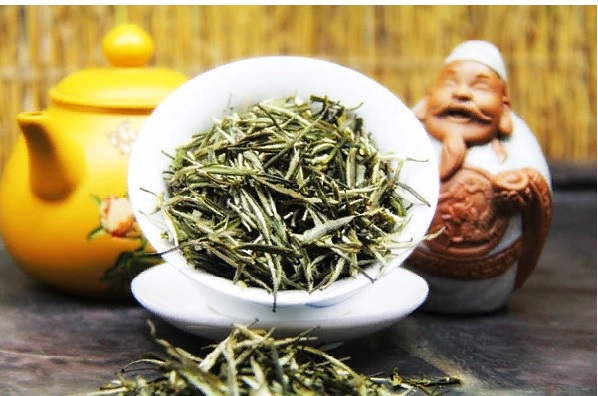
The shade of the finished drink is amber, the aroma is tart fragrant. The taste is fresh, tart and velvety. The tea has no aftertaste, stable taste, no stratification into notes. According to customer reviews, tea invigorates and improves mood.
- high content of vitamin C;
- low% caffeine content;
- exceptional taste.
- a number of gastrointestinal diseases;
- high price: from 1000 for 10 g;
- a large number of fakes and poor quality raw materials.
There is a legend: when the Emperor was first served yellow tea Jun Shan Yin Zhen, brewed in a transparent glass, he was surprised by such unusual "behavior" of tea leaves. Seeing the interest on the Emperor's face, the adviser said: "As the tea leaves rise, they salute Your Majesty, and when they go down they bow their head." The emperor liked what was said, and tea was included in the top ten famous imperial teas.
Ho Shan Hua Yang
The history of this variety of yellow tea is also closely related to the Chinese nobility, dating back to the Tang Dynasty. For a long time, leaf tea was presented to the Manchus as a tribute. According to legend, they consumed the drink, richly flavored with milk, getting incomparable energy from the cocktail. Ho Shan Hua Yang grows in Anhui province, on the high mountain Ho Shan.
Tea collection: bud and leaves (1-2 pcs).
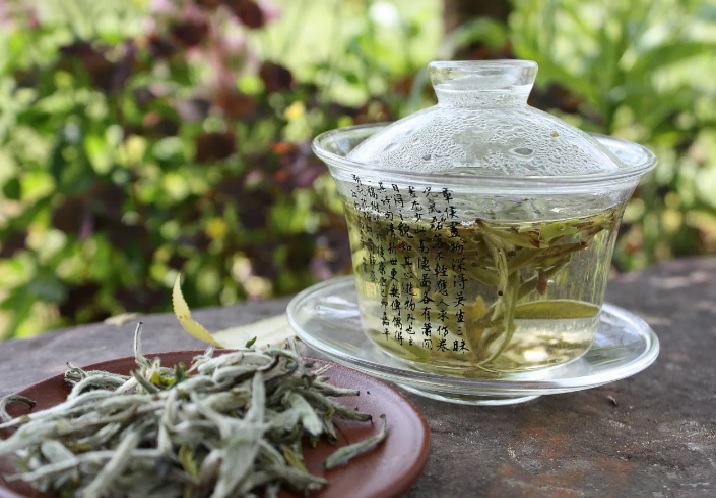
The tea infusion is transparent, slightly yellowish. There is a long-lasting sweet aftertaste. The delicate aroma with distinct notes of baked milk will not please everyone.General flavor characteristics: woody, floral, very tart.
- the price is lower than for other varieties of a yellow drink from 500 r for 50 g;
- unusual milky taste;
- good antidepressant.
- tart taste "for an amateur";
- often in the package there is an impurity from the leaves;
- residents of small towns can only order online.
Wei Shan Mao Jian
Fuzzy Blades - The second name for this sought-after yellow tea from Hunan Province comes from its resemblance to the shape of a densely naped blade. Mao Jiang is also listed in the top ten imperial teas. Tea gardens from the era of Eastern Zhou are located in the Xinyang mountainous region, at an altitude of 800 meters.
The tea is large-leaved; when assembled, fat buds and 2-4 leaves are removed.
Tea collected in mid-spring is considered the best and usually costs more. Summer raw materials are no longer so fluffy and aromatic.
Here's what to look out for when buying Mao Jiang - at the harvest date.
The active color of the drink is green with a yellowish tinge. There is a subtle aroma of clover and an active aroma of dried fruits. Invigorating sweet taste. Fruity aftertaste. It is recommended to brew the leaves in porcelain gaiwan, it is believed that this method fully reveals the taste and smell of the drink.
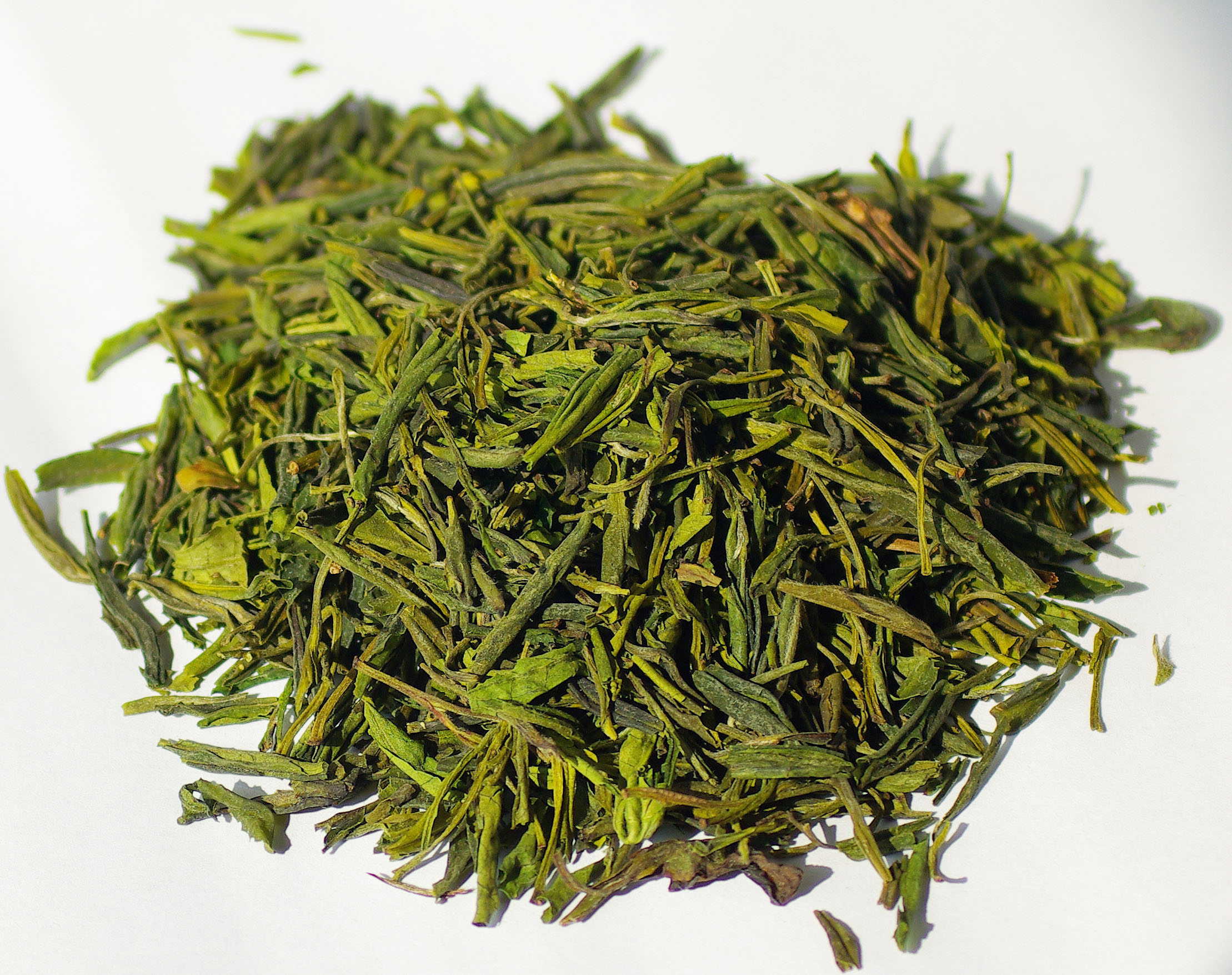
- amazing fruity taste;
- the taste lasts 5-6 brews;
- has a diuretic effect.
- rarity;
- high price of 700 rubles. for 10 g;
- taste only for 1-2 brews.
Meng Ding Huang Ya
Meng Ding Huang Ya is grown in the Meng Ding Mountains at an altitude of 1000 m, near Sichuan province. Young buds without leaves are involved in harvesting. The technology is similar to the processing of green and other types of yellow tea. A distinctive feature of Meng Ding Huang is its unusual taste, in which there is absolutely no taste of sluggish grass. Has a bright floral scent.
According to customer reviews: the drink is similar in aroma to white tea, resembles varieties of tart green teas; tea has an unusual aroma of tomatoes. The color of the drink is pale green. Tea invigorates not immediately, but 2 hours after drinking. Fills with energy. Relieves malaise. Many appreciated the ability of tea to influence coordination and concentration as a positive side.
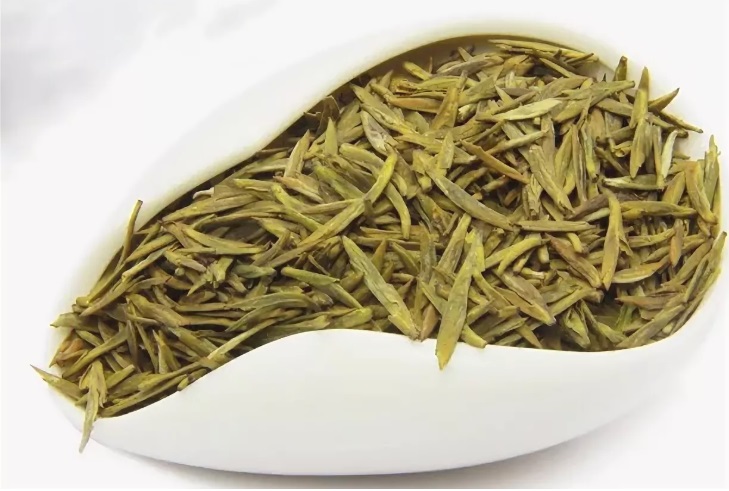
- young variety with a high content of vitamins;
- opens with a bud of different tastes;
- adds energy.
- high price from 900 rubles. for 10 g;
- it's hard to find a real one;
- unscrupulous manufacturers knead with flower dust.
Big yellow tea
Huo Shan Da Cha
The younger brother of this variety is Meng Ding Huang Ya, the difference is that Huo Shan Huang Da Cha belongs to the "large varieties" of tea. When assembled, they break off: half-open buds with 3 - 4 adjacent large leaves. At the same time, the drink, like all yellow varieties, is covered with a light cannon layer.
The dry leaf gives off the smell of dried herbs and fried cereals. The steamed leaf captures notes of pumpkin seeds and vegetables. Tea connoisseurs compare the taste to Huangshan Maofen.
The taste is dense: herbaceous, cucumber. Has a light aftertaste.
- tart taste;
- long unobtrusive aftertaste;
- low price of 750 rubles for 50 g.
- Huo Shan Huang Da Cha is often given ordinary green tea;
- with preservation of taste, brewed 1 time;
- purchase through an online store from a foreign manufacturer.
Conclusion
You can order yellow tea online or buy it in specialized stores in major cities. It is worth paying attention: the shelf life and harvest time, ideally, is mid-spring or early summer. Each variety has its own taste, which each person chooses for himself individually. Lovers of the drink give advice, buy tea visually, checking the purity of the leaf for the presence of herbal impurities, or purchase elite tea only from a trusted manufacturer. And then tea drinking will become an unforgettable pleasure.
new entries
Categories
Useful
Popular articles
-

Top rating of the best and inexpensive scooters up to 50 cubic meters in 2020
Views: 97661 -

Rating of the best materials for noise insulation for an apartment in 2020
Views: 95022 -

Rating of cheap analogues of expensive medicines for flu and colds for 2020
Views: 91751 -

The best men's running shoes in 2020
Views: 87681 -

Top ranking of the best smartwatches 2020 - price-quality
Views: 85091 -

Best Complex Vitamins in 2020
Views: 84801 -

The best dye for gray hair - 2020 top ranking
Views: 82406 -

Rating of the best wood paints for interior use in 2020
Views: 77202 -

Ranking of the best action cameras from China in 2020
Views: 75269 -

Rating of the best spinning reels in 2020
Views: 74827 -

The most effective calcium supplements for adults and children in 2020
Views: 72463 -

Top rating of the best in 2020 means for male potency with a description
Views: 68296
